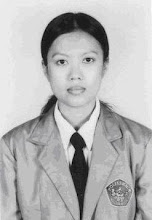 Batik, in Javanese means 'To Dot'. Basically there are two kinds of batik; Batik Tulis (hand drawn) and Batik Cap (stamped). The price of batik tulis is much more expensive than batik cap. A canting (a pen like instrument with a small reservoir of liquid wax) is applied to the cloth of batik tuli
Batik, in Javanese means 'To Dot'. Basically there are two kinds of batik; Batik Tulis (hand drawn) and Batik Cap (stamped). The price of batik tulis is much more expensive than batik cap. A canting (a pen like instrument with a small reservoir of liquid wax) is applied to the cloth of batik tuli s making. The tracing of the desired design on to the prepared cloth is the first stage of making followed by the technique of applying wax and dye substances. At the final stage of the process, all the wax scraped off and the cloth boiled to remove all traces of the wax. This process of repeatedly waxing and dyeing is the batik process, used until nowadays in Java and other parts of Indonesia. So, this kind art of batik is an indigenous to the country. The wax used in batik process is a combined product of paraffin, bees-wax, plant resins called gondorukem and mata kucing. Batik cap, which is also using the waxing process, its process of course faster and easier. But people appreciation of batik tulis is higher, it is really a work of an artist not only a craftsman. It combines the expertise, patience, deep feeling to produce the finest product, and it may take days, weeks and even months to make only a batik tulis. Yogyakarta and Solo are the centers of traditional of batiks, as the north coas
s making. The tracing of the desired design on to the prepared cloth is the first stage of making followed by the technique of applying wax and dye substances. At the final stage of the process, all the wax scraped off and the cloth boiled to remove all traces of the wax. This process of repeatedly waxing and dyeing is the batik process, used until nowadays in Java and other parts of Indonesia. So, this kind art of batik is an indigenous to the country. The wax used in batik process is a combined product of paraffin, bees-wax, plant resins called gondorukem and mata kucing. Batik cap, which is also using the waxing process, its process of course faster and easier. But people appreciation of batik tulis is higher, it is really a work of an artist not only a craftsman. It combines the expertise, patience, deep feeling to produce the finest product, and it may take days, weeks and even months to make only a batik tulis. Yogyakarta and Solo are the centers of traditional of batiks, as the north coas tal town of Pekalongan is the center of more modern batiks, using more floral and birds motifs. There are some well-known artists of batik design in Yogya and Solo, as well as some big batik manufacturers with famous trademarks. The growing production of batik makes way to the establishment of mori (woven cotton fabrics) factories in Yogya and Central Java. The Batik research Institute was founded in Yogyakarta.
tal town of Pekalongan is the center of more modern batiks, using more floral and birds motifs. There are some well-known artists of batik design in Yogya and Solo, as well as some big batik manufacturers with famous trademarks. The growing production of batik makes way to the establishment of mori (woven cotton fabrics) factories in Yogya and Central Java. The Batik research Institute was founded in Yogyakarta.
Wednesday, May 28, 2008
The Process of Batik Making
Subscribe to:
Post Comments (Atom)





1 comment:
Allow Astri.. lam kenal juga yach... thx dah mampir ke blog aq... hmm nice blog here... goodluck n have a nice day..
Post a Comment